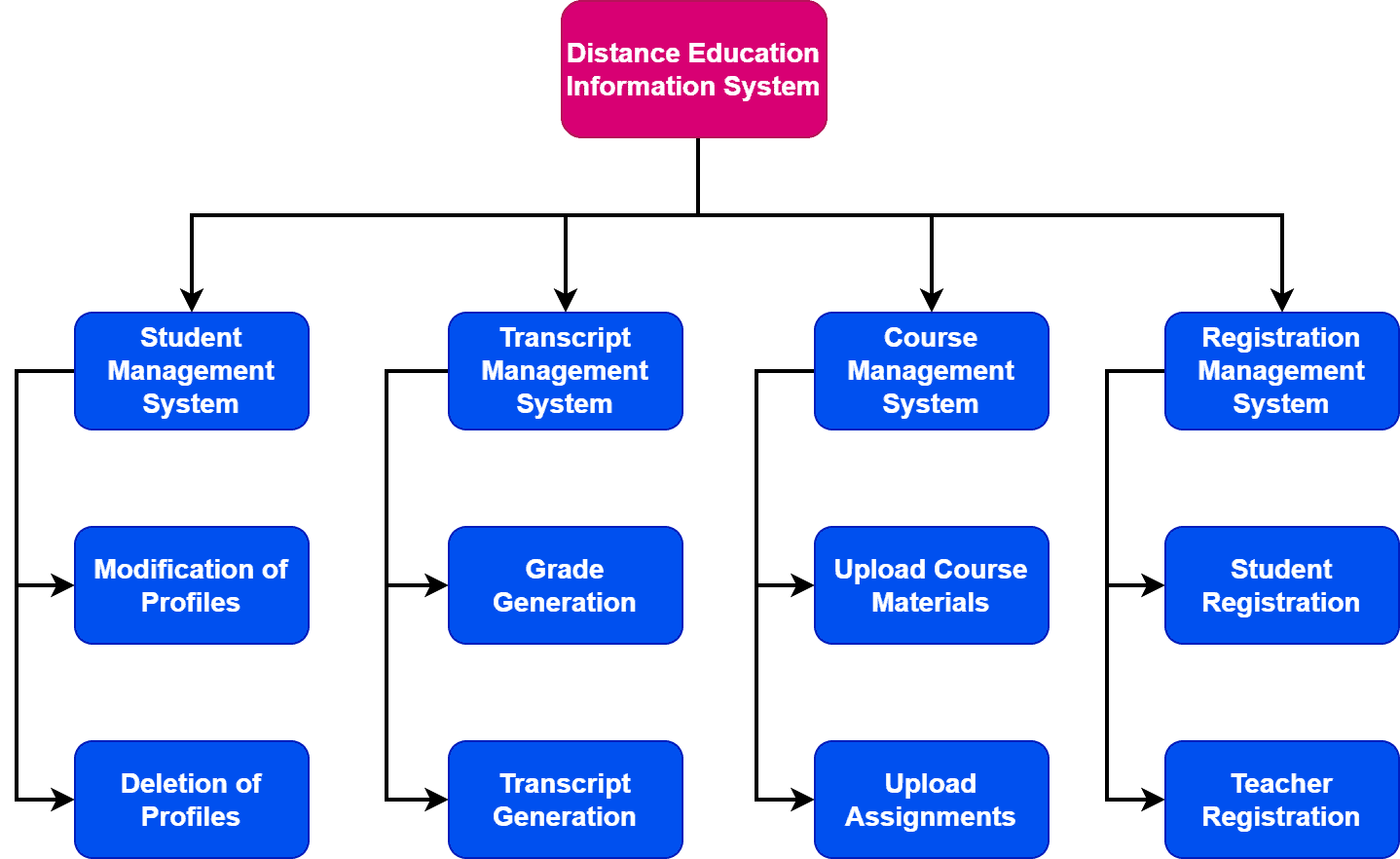1. Overview
In this tutorial, we’ll discuss functional decomposition in detail with a practical example.
Furthermore, we’ll explore the advantages and disadvantages of this method.
2. Introduction
Functional decomposition is a system design and analysis method that involves breaking down a complex system into smaller, more manageable components. Furthermore, we break down complex systems using specific functions and relationships.
It’s a process of breaking down a system into its constituent parts, identifying functions, and defining how they interact to achieve the system’s objectives. The goal of functional decomposition is to simplify complex systems into smaller, more manageable, and understandable parts. Functional decomposition makes it easy to design, analyze, and implement complex systems conveniently.
It has a wide range of applications in various fields, including software engineering, system engineering, business process improvement, and robotics.
In software engineering, we simplify complex software systems using functional decomposition. Additionally, we can identify the different components and functions that need to be developed. Additionally, in order to design complex systems, system engineering applies functional decomposition techniques to analyze the requirements.
We can also use this technique to streamline business processes by breaking them down into smaller components and analyzing each to identify improvement areas. Furthermore, we can utilize it to design and explore the different components of robots, including sensors, actuators, and control systems.
Functional decomposition is a versatile technique that can be applied to a wide range of complex systems and can help to simplify the design, analysis, and implementation process.
3. Steps
Functional decomposition breaks down a complex system into smaller, simpler components based on their specific functions. This process typically consists of five steps:

The first step is to identify the system’s primary functions. This process involves defining what the system does and what it is supposed to achieve. The next step is to divide the main functions into smaller sub-functions. Additionally, each main function is broken down into smaller, more manageable parts based on their specific tasks.
Furthermore, we define the relationships between the sub-functions. This involves understanding how the sub-functions interact and collaborate to achieve the overall system objectives. Moving forward, we also represent the relationships between sub-functions visually. We typically do it using a functional block diagram, which shows the different sub-functions and how they interact.
Finally, we refine the functional decomposition. It involves reviewing the functional block diagram. Additionally, we make necessary modifications to ensure it accurately reflect the system and its functions.
By breaking down a complex system into smaller, simpler components, functional decomposition helps to simplify the design and analysis process, making it easier to understand and implement.
4. Example
Let’s discuss a practical example where we use functional decomposition in order to simplify a complex system. Here, we’ll present an example of the distance education information system where students can manage and access all the courses online. Let’s take a look at how we can use functional decomposition to break down the distance education information system:

Here we divide the distance education information system into four easy-to-manage parts: student management, transcript management, course management, and registration management systems. Additionally, we divide each subsystem further into two parts.
For example, students can modify their profiles and add any necessary information under the student management system. Furthermore, the system administrator can delete a student’s profile when they complete their degree. In this way, functional decomposition divides a complex system into manageable subsystems.
5. Advantages
Functional decomposition has several advantages. Let’s discuss some important benefits of it.
The most important advantage is that it simplifies complex systems. By breaking down a complex system into smaller, simpler components, functional decomposition makes it easier to understand and analyze the system. Additionally, it improves collaboration. By defining the relationships between different components, functional decomposition helps different teams and stakeholders understand how they need to work together to achieve the overall system objectives.
It promotes reusability in the systems. As we break down systems into smaller, modular components, functional decomposition makes it easier to reuse components in future projects. Hence, it saves time and resources for the system designers and engineers.
Finally, it helps in enhancing communication between stakeholders. By providing a clear visual representation of the different components and relationships, it improves communication between stakeholders. Additionally, it helps to avoid misunderstandings.
Overall, functional decomposition provides a structured and systematic approach to simplifying complex systems, improving collaboration, and facilitating design, analysis, and implementation.
6. Disadvantages
Functional decomposition, like any other method, has some disadvantages, including time consumption, limitation in flexibility, risk of oversimplification, lack of integration, and dependence on domain expertise.
The process of breaking down a complex system into smaller components and defining their relationships can be time-consuming. Additionally, it requires significant effort. Furthermore, once a functional decomposition has been performed, it can be challenging to make changes to the system without starting the process over again.
Another disadvantage of functional decomposition is the risk of oversimplification. By breaking down a complex system into smaller components, there is a risk of over-simplifying the system and not accurately representing its complexity. Additionally, functional decomposition can overlook the interactions and relationships between different parts of the system as it focuses on individual components, leading to a lack of integration.
Finally, the success of functional decomposition depends on the domain expertise of the people performing the analysis. Additionally, the results can be limited by their knowledge and experience.
While these limitations should be considered, functional decomposition remains a useful tool for simplifying complex systems and facilitating design, analysis, and implementation.
7. Conclusion
In this tutorial, we discussed how functional decomposition works with a practical example. Furthermore, we explored the core advantages and disadvantages of this method.